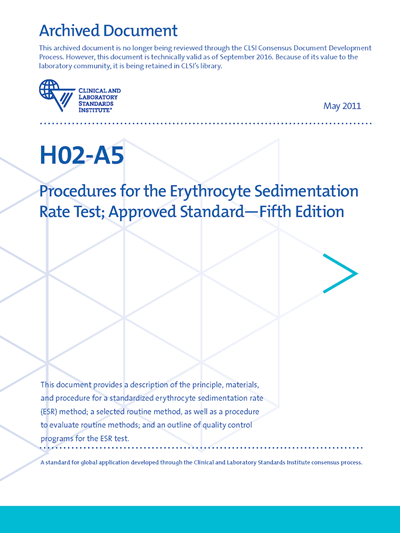CLSI H02
Procedures for the Erythrocyte Sedimentation Rate Test, 5th Edition
This document provides a description of the principle, materials, and procedure for a standardized erythrocyte sedimentation rate (ESR) method; a selected routine method, as well as a procedure to evaluate routine methods; and an outline of quality control programs for the ESR test.
This document is available in electronic format only.
Member price:
List Price:Details
Chairholder: Dorothy M. Adcock, MD
Date of Publication: May 31, 2011
Order Code PDF: CLSI H02A5E
ISBN Number: 1-56238-753-7
Order Code Print: print not available
Edition: Fifth
Pages: 36
CLSI H02 Additional Details
If interested in ordering larger quantities of this document in print, please contact us here.
This archived document is no longer being reviewed through the CLSI Consensus Document Development Process. However, this document is technically valid as of September 2016. Because of its value to the laboratory community, it is being retained in CLSI’s library.

